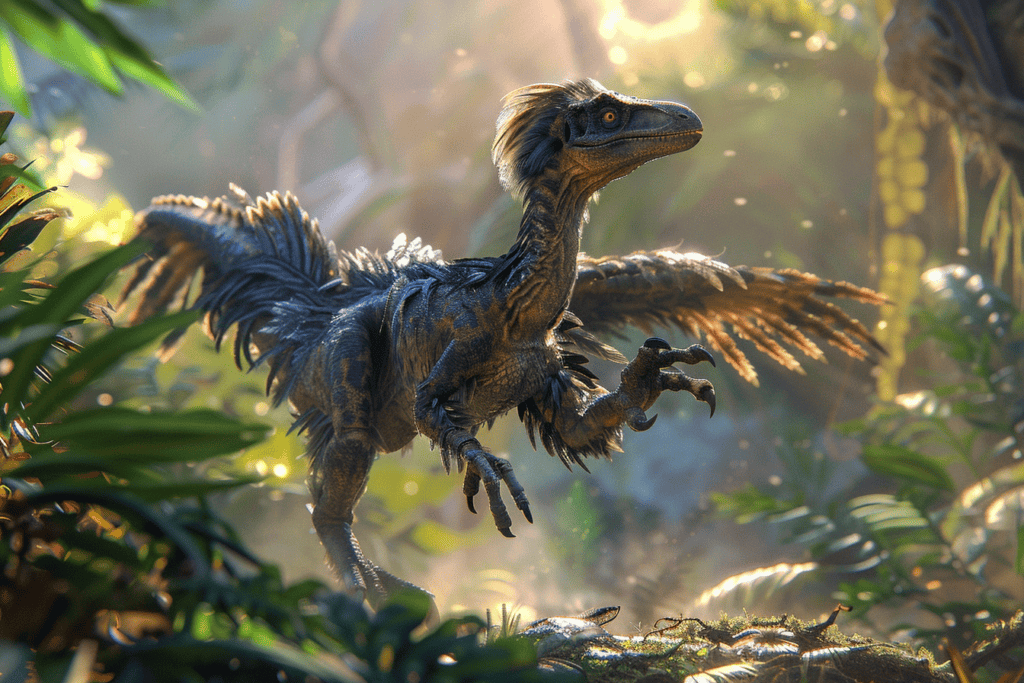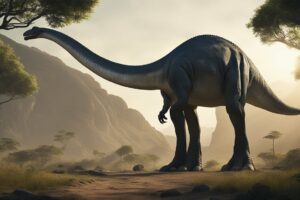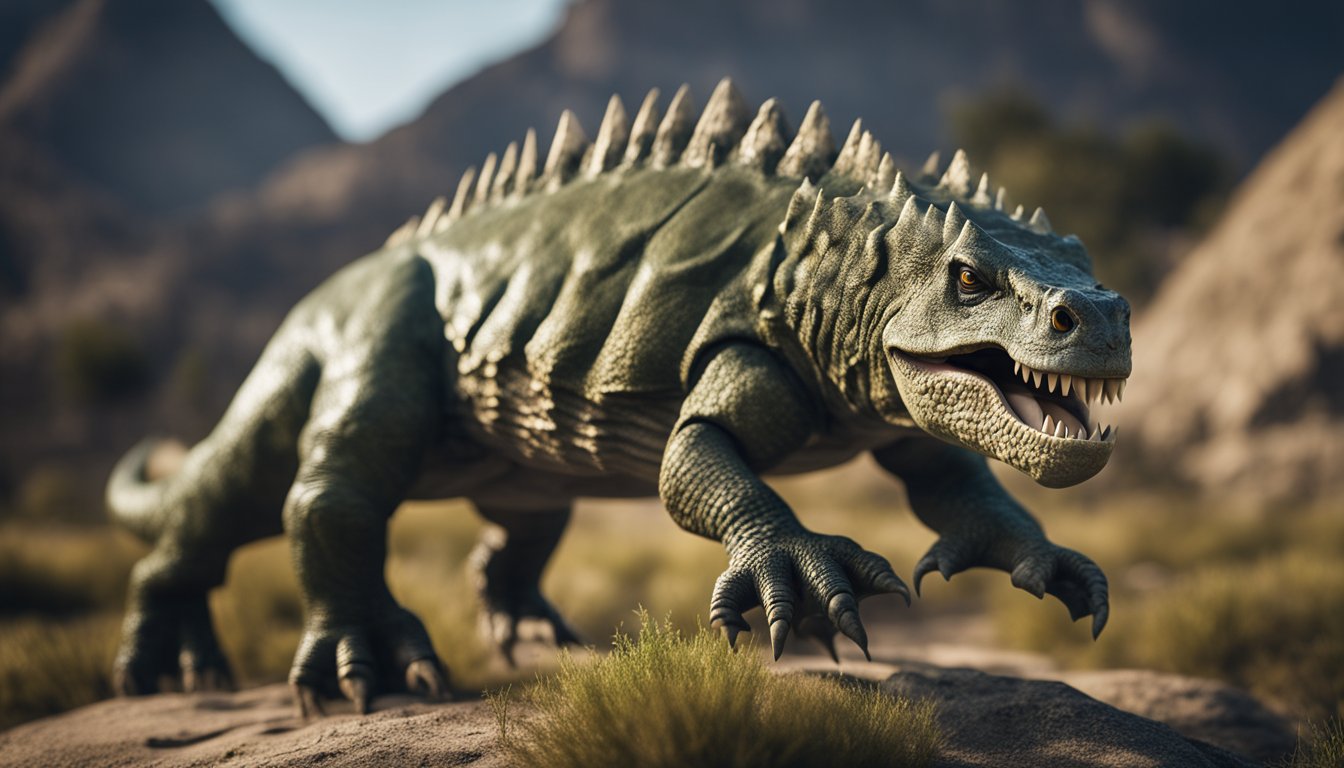Velociraptors are one of the most well-known and beloved dinosaurs of all time. They are often depicted in popular culture as ferocious, scaly beasts that terrorize their prey with sharp claws and teeth.
However, recent scientific discoveries have shed new light on these fascinating creatures, revealing that they were actually much more bird-like than previously thought.

One of the most surprising discoveries about velociraptors is that they had feathers. This revelation came after paleontologists discovered evidence of six quill knobs on the forearm of a velociraptor fossil. This finding suggests that the feathers were used for insulation, display, or possibly even flight.
The discovery of feathers on velociraptors has led to a rethinking of how these dinosaurs looked and behaved. Instead of being scaly and reptilian, they were likely covered in feathers and had a bird-like appearance. This new understanding of velociraptors has also led to a reevaluation of how they lived and interacted with their environment, providing new insights into the fascinating world of dinosaurs.
Velociraptor: A Feathered Phenomenon
Unveiling the Fossil Evidence
Velociraptors are a fascinating species of dinosaurs that have captured the imagination of people around the world. Recent fossil evidence has revealed that these creatures were not only fierce hunters but also had bird-like features, including feathers.
Paleontologists have uncovered fossils of Velociraptors in China and Mongolia, which have helped to shed light on their feathered nature.
One of the most significant discoveries is the presence of quill knobs on the forearm of a Velociraptor fossil. These knobs are small lumps of bone that act as attachment points for feathers, providing direct evidence that Velociraptors carried a row of feathers on their forearms. The discovery was made by paleontologists at the American Museum of Natural History, who published their findings in a paper.
Comparing Birds and Velociraptors
The discovery of feathers on Velociraptors has led to comparisons between these dinosaurs and modern-day birds. Scientists have found that Velociraptors shared many anatomical similarities with birds, including a wishbone, a fused clavicle, and a keeled breastbone.
These features are unique to birds and suggest that Velociraptors were more closely related to birds than previously thought.
Despite these similarities, Velociraptors were still very different from birds. They had sharp teeth and claws, and their feathers were not used for flight but rather for insulation and display. Nevertheless, the discovery of feathers on Velociraptors has changed our understanding of these creatures and their place in the evolutionary history of birds.
From Velociraptors to Modern Birds

When we think of modern birds, we often imagine them soaring through the sky, chirping sweetly, and building nests in trees.
But did you know that birds are actually descendants of dinosaurs? It’s true! Over millions of years, dinosaurs evolved into birds, and one of the most fascinating examples of this is the velociraptor.
Velociraptors were fierce predators with sharp claws and teeth. But they also had a bird-like feature that helped them hunt: feathers. Yes, velociraptors had feathers! These feathers were not used for flying, but rather for insulation and display purposes.
Over time, these feathers became more and more important for survival, and some dinosaurs evolved to use them for flight. This led to the development of birds as we know them today.
The Evolutionary Tale of Tails and Arms
Another interesting aspect of dinosaur evolution is the tale of their tails and arms. The earliest dinosaurs had long tails and small arms, but over time, some dinosaurs evolved to have shorter tails and longer arms. This was an important adaptation for dinosaurs that were starting to use their arms for things like grasping prey and climbing trees.
One of the most famous examples of this is Archaeopteryx, a dinosaur that lived around 150 million years ago. Archaeopteryx had long feathers on its arms, which it likely used for gliding. This was a crucial step in the evolution of flight, as it allowed dinosaurs to start using their arms for more than just walking.
As time went on, dinosaurs continued to evolve, and some eventually became birds. Today, there are over 10,000 species of birds, each with their own unique adaptations for survival.
Raptors in Research and Popular Culture

Over the years, paleontologists have made numerous discoveries and breakthroughs regarding velociraptors. In 2007, researchers at the University of Edinburgh discovered that velociraptors were actually covered in feathers. This discovery completely changed the way scientists viewed these dinosaurs, as they were previously thought to be scaly and reptilian.
In 2015, Steve Brusatte, a paleontologist at the American Museum of Natural History, led a team of researchers in discovering a new species of raptor called Zhenyuanlong suni. This dinosaur had wings that were covered in feathers and was the largest raptor ever discovered. These discoveries have led to a better understanding of raptors and their bird-like nature.
Velociraptors in the Limelight
Velociraptors have become a popular topic in science journalism and popular culture. One of the most well-known depictions of velociraptors is in the movie “Jurassic Park”. While the movie portrays them as ferocious, scaly creatures, the reality is that they were feathered and likely had a bird-like appearance.
Velociraptors have also been featured in numerous science journals and documentaries. These publications have highlighted the discoveries made by scientists and have helped to educate the public about the true nature of these fascinating creatures.
Fun Fact: The word “raptor” comes from the Latin word “rapere”, which means “to seize or grab”. This is a fitting name for velociraptors, as they were known for their sharp claws and ability to catch prey.
The Habitat and Hunting Habits of Velociraptors

Adapting to the Environment
Velociraptors were well-adapted to their environment, which was characterized by vast open plains and forests. They were able to survive in these environments by developing a range of physical and behavioral adaptations.
They had sharp teeth that were perfect for tearing flesh, and their long, powerful legs allowed them to run at high speeds. Velociraptors also had large, curved claws on their feet that helped them to grip their prey and climb trees.
One of the most interesting adaptations of Velociraptors was their feathers. Recent discoveries have shown that these dinosaurs were covered in feathers, which helped them to regulate their body temperature and may have also played a role in courtship displays. The feathers were also useful for camouflage, allowing the dinosaurs to blend into their surroundings and avoid detection by predators.
The Predator’s Arsenal
Velociraptors were skilled hunters and used a range of tactics to catch their prey. They were pack animals and would work together to take down larger prey. They would also use their sharp claws and teeth to inflict fatal wounds on their victims.
One of the most interesting aspects of Velociraptor hunting behavior is their use of nests. Recent excavations have revealed that these dinosaurs would build nests to lay their eggs and raise their young. The nests were often located in hidden locations, such as under bushes or in shallow depressions, to protect the eggs from predators.
Frequently Asked Questions
How big were Velociraptors compared to today’s animals?
Velociraptors were about the size of a large turkey, weighing around 30 pounds. They were much smaller than the popular depiction in movies like Jurassic Park. In fact, many modern birds are larger than Velociraptors.
What did Velociraptors typically eat during their time on Earth?
Velociraptors were carnivorous and ate meat. They were skilled hunters and preyed on smaller dinosaurs and other animals. They were also known to scavenge for food when necessary.
Can you share some exciting facts about Velociraptors?
Velociraptors were fast runners and could reach speeds of up to 40 miles per hour. They were also very intelligent and had sharp senses, making them formidable hunters. Additionally, scientists believe that Velociraptors were warm-blooded, which is a trait shared by modern birds.
In what environments did Velociraptors make their homes?
Velociraptors lived in a variety of environments, including forests, grasslands, and deserts. They were found in what is now Mongolia and China during the Late Cretaceous period, around 75-71 million years ago.
What kind of hunting strategies did Velociraptors use?
Velociraptors were pack hunters and used their intelligence to coordinate attacks on their prey. They would use their sharp claws to slash at their victims and their teeth to deliver a fatal bite. They were also known to use their speed and agility to outmaneuver their prey.
What scientific evidence supports the idea that Velociraptors had feathers?
Scientists have found fossilized remains of Velociraptors with feathers. This provides strong evidence that they were covered in feathers. Additionally, the discovery of other feathered dinosaurs from the same time period supports the idea that many dinosaurs were feathered, including Velociraptors.





